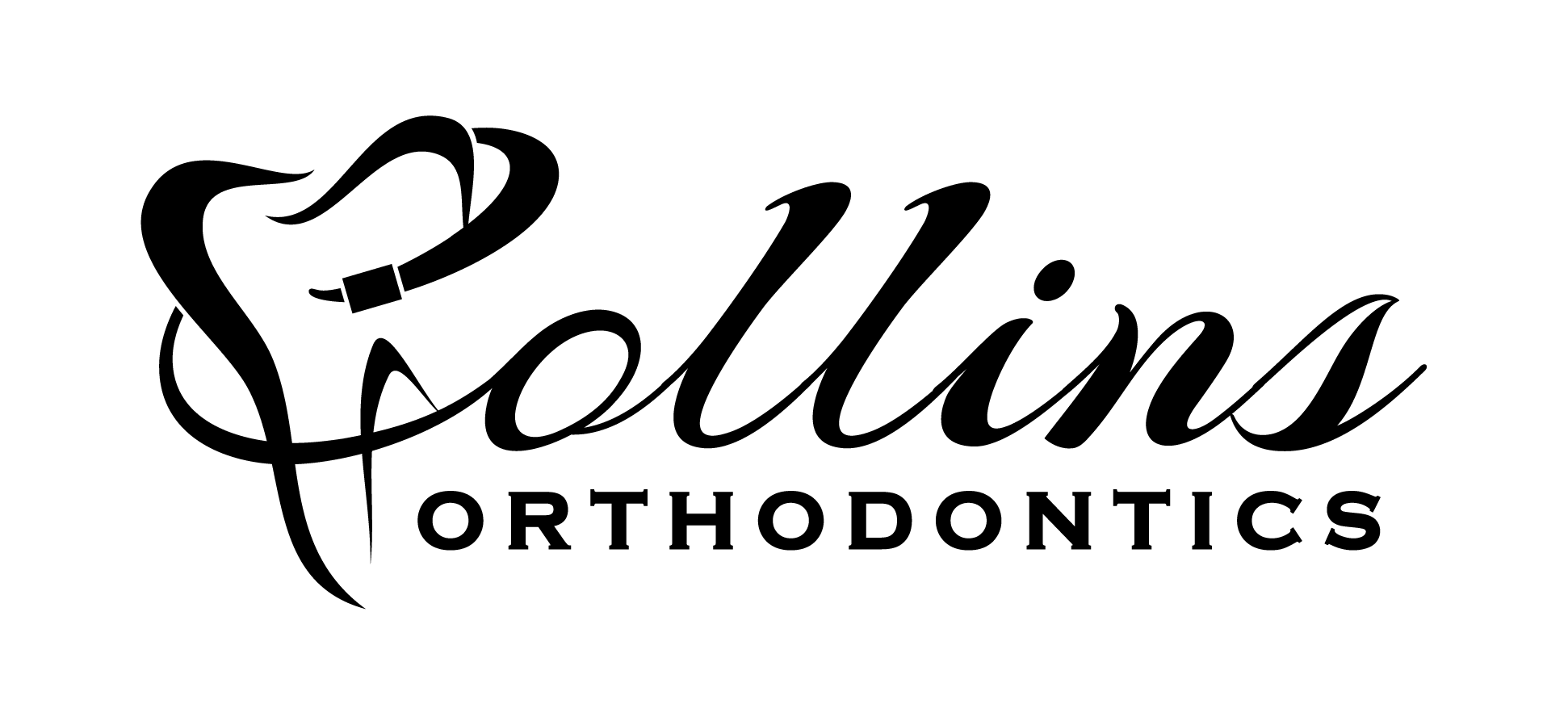WHEN SHOULD YOU SEE AN ORTHODONTIST
What age should my child first visit an orthodontist?
The American Association of Orthodontists (AAO) recommends that your child first see an orthodontist at the age of seven. You do not need a referral from your primary care dentist in order to set up your child’s screening with an orthodontist.
Many times your primary care dentist will recognize problems that need to be seen by an orthodontist and then place a referral to our office. We absolutely love it when dentists do this because it allows us to evaluate the problem to determine if treatment is needed, and when the best time will be to begin treatment. Seeing an orthodontist for a screening at age 7 will make sure that nothing is overlooked and that all of the teeth are erupting and developing properly. So, your child should see an orthodontist by the age of seven.
I know what you are thinking – “Why in the world would my child need braces at age 7? That seems way too young!” Here is the deal – you are right that most seven-year-olds will not be getting braces. In fact, we found that it’s quite the opposite. The overwhelming majority of patients who come in for a screening do not need early treatment. However, the American Association of Orthodontists does recommend a screening at the age of 7 in order to catch and rule out some potentially very serious situations that are difficult to detect to the untrained eye.
What types of problems does the orthodontist look for at the initial “age 7” screening?
At your child’s age 7 screening, your orthodontist should be looking for a number of things. There’s no need to be worried about full braces at this age. We’re just screening for problems that could become potentially serious if left untreated. The problems usually include things such as the following:

- Cross bites with a functional shift– In other words, a jaw that has to shift into a different bite than normal, which results in the lower teeth being on the outside of the upper teeth, or a “cross bite.” Although there are many problems that can be corrected when your children are older (with more permanent teeth), this is one problem that should be addressed as early as possible, and here is why – if left untreated, cross bites that involve your child shifting the lower jaw can cause issues with the way the lower jaw grows and potentially lead to serious bite issues later in life. If cross bites are left untreated at an early age, growth can become asymmetric. This asymmetric growth may lead to large asymmetries in the lower jaw later in life which often require more invasive treatments, such as jaw surgery, to correct when they are adults. But here is the good news – cross bites are often an easy fix at an early age, so do your child a huge favor by getting him or her screened by an orthodontist at the age of 7. Addressing cross bites at a young age will save your child from potentially long, expensive, and invasive treatments later in life!
- Premature loss of baby teeth– Losing baby teeth early may lead to other teeth tipping into open space and thus blocking out other permanent teeth from erupting properly. If caught early, your orthodontist will be able to place a simple “space maintainer” appliance that will prevent adjacent teeth from tipping into the space. However, if not caught early, then teeth may shift and block out the eruption of other permanent teeth, thus significantly increasing the overall treatment needs and cost for care. Catching this problem early can save your child time in braces and save you money!
- Over-retained baby teeth– Not losing teeth in the correct order, or not losing teeth on time, may result in the permanent teeth erupting into unfavorable positions or even becoming “stuck” up in the bone. There are simple, non-invasive early treatments (which may not even require braces) that may prevent much more involved and expensive treatments later in life.
- Thumb or finger sucking habits– Thumb habits will cause teeth to move in unwanted ways, and can even cause jaw growth problems. Thumb habits should be pointed out to your orthodontist immediately. Your orthodontist will use a combination of coaching and reminder appliances to help your child discontinue the habit.
- Severe dental crowding– Many times we don’t even need to put early braces on your child if he or she has severe crowding at the age of 7. However, if there is not enough room in the mouth for all of your child’s teeth to fit, then we will talk about the potential need for tooth extractions and the appropriate timing and age for those extractions. Your child will likely need braces later on, but there are more conservative (and proven) techniques that we can use at an early age to significantly improve the alignment of your child’s teeth, without even having to place early braces!
- Impacted teeth– (i.e. teeth that are stuck in the bone). If your child has teeth that are impacted, then your orthodontist will develop a plan to allow these teeth to erupt into the mouth as easily and painlessly as possible.
- Teeth that “stick out” too far– If your child’s adult teeth stick out too far, then he or she may be at risk for injuring and damaging these teeth.
- Children who are being “teased” at school– Whether it be teeth that are crowded, stick out too far, teeth that are spaced far apart, or other concerns, bullying is very real and damaging to kids in today’s world. Names such as “toothy” or “bucky” may seem harmless but could be devastating to your child’s self-confidence. According to Facts for Life, Volume 4 online: “Early experiences provide the base for the brain’s organizational development and functioning throughout life. They have a direct impact on how children develop learning skills as well as social and emotional abilities.” If your child is getting teased or is self-conscious at an early age, this may be a great reason for early treatment.
All of the issues listed above are exactly what we look for at your child’s early screening. In fact, some of these items don’t even require the placement of orthodontic appliances. In some of these potential early issues, we can simply have your primary care dentist remove a few baby teeth that are causing problems for future adult teeth, without even placing braces or appliances. The bottom line is this – we will tell you at your initial orthodontic screening appointment if your child could benefit from early orthodontic treatment. I cannot stress the importance enough of your child getting screened by the age of 7.
Why are some kids getting braces earlier and earlier?
So now you know the importance of every child getting a screening by an orthodontist at the age of 7. In fact, if you have a child over the age of 7, you should stop reading this immediately and call your orthodontist to schedule an exam today. Really. Catching things early CAN save you from lengthier, more complicated, and more expensive treatment later on! HOWEVER, in the same breath I use to inform parents that an early screening at the age of 7 is the best way to help your child potentially avoid big orthodontic problems later on, I also mention that most children will NOT need braces until 11 to 13 years of age. In order to understand why, you should first know a little bit about the history of orthodontic treatment (hang in there, folks…this is important and worth your time to read!).

In the 1960s, orthodontists rarely treated children at a young age because the technology was not sophisticated enough to prevent adult teeth from needing to be extracted later on. So almost every kid received one phase of braces at around the age of 12, and nearly every one of these kids had to get permanent teeth removed.
In the 1980s, new technology in the form of “memory wires” was introduced to orthodontics. These new memory wires were used with appliances capable of expanding the patients’ jaws, which opened up an entirely new group of patients – younger children between the ages of 7 and 10. So in the 1980s, every fourth grade kid started to get braces with the hopes that they would not need permanent teeth removed later on.
Fast forward to present day. Now we have over 40 years of early treatment results in the orthodontic literature, which proves that early treatment does not really make a difference in many cases! A high quality research study conducted at the University of North Carolina provided 10 years’ worth of research, and what they found shocked the orthodontic world. In fact, many orthodontists began asking the question, “do kids really benefit from early treatment?”
So what were the findings from the study that completely changed the orthodontic world? The study showed the treatment outcomes from two different groups of patients (both groups with similar “starting” bites) – the first group consisted of patients that waited until they were 11 to 13 years of age to start braces, and the other group had two separate phases of braces. Can you guess what they found?
The group who waited until 11 to 13 had nearly identical results as those who received two separate rounds of braces. Confused? You are not alone. Millions of parents across the country are confused every year when they get different opinions from orthodontists regarding early treatment.
So the question becomes this – who is right? – the orthodontist who tells you to wait on treatment or the orthodontist who recommends to start early? It will always depend on the risks involved in your child’s individual case with waiting versus starting treatment early.
Although starting early is crucial in some cases, remember that the most current research shows that most children between the ages of 7 to 10 will NOT need early treatment. This is based on solid peer-reviewed high quality research – the same literature and research in which I was taught and trained as an orthodontic fellow at the world-famous Mayo Clinic. So let me ask you this – if you could get the exact same (or better) result with less time in braces for your child for a lower overall cost, would you choose that option? Me too.
I’m confused. My child needs to see an orthodontist by age 7 but will likely not need early treatment? So what’s the point of the screening?
At this point, you are probably confused. If most kids don’t need treatment at an early age, then why in the world should an orthodontist screen your child at age 7? Here is what you need to know. I agree with the American Association of Orthodontists that your child should see an orthodontist no later than the age of 7 for a screening only in order to determine if he or she can benefit from early treatment.
The good news is this – in my experience, only 5-10% of young patients who get these screenings actually need early treatment. For those 5-10%, early treatment can literally prevent the need for surgery and extremely expensive orthodontic treatments later in life. These 5-10% who need treatment will likely have one of the following:
- Cross bites
- Severe crowding
- Jaw alignment issues
- Early loss of baby teeth
- Late loss of baby teeth
- Impacted or missing teeth
- Finger and thumb habits
- Protruding teeth
If your child has one of the above, then we will be able to catch it early in order to come up with a game plan. Some of the above problems will require early braces, and some will simply require the placement of simple appliances. If you don’t get a screening early, then you really are taking a risk for your child, no matter how small it may be.
So which is it, early treatment or not?
The bottom line is this: you need to get your child screened by an orthodontic specialist no later than age 7. You do not need a referral from your dentist to schedule this screening. And remember, 90-95% of the time your child will not require early treatment. Instead, we will monitor their growth until the perfect time for braces, and only if they are absolutely necessary.
If your orthodontist tells you that everyone can benefit from early treatment, the simple truth is that we have better research today that has proven this is not the case. I tell parents in these situations that we can get the same result, with less time in braces and less money invested, if we wait until the perfect time for braces.
What is the best age for braces?
So you’ve had your child screened by the orthodontist and now you are wondering what the best age for treatment will be. If your child is one the few who does need early treatment, typically the best age will depend on which permanent teeth have already erupted into the mouth. Usually, early treatment will be started between the ages of 7 to 10, but this can vary.
If early treatment is not indicated, then the best age for treatment will be determined by two main factors – the number of permanent teeth present, and your child’s state of growth. If your child does not have the proper number of permanent teeth present and we put braces on too early, then we will waste valuable time just sitting in braces while we wait for the rest of the adult teeth to come into the mouth. This can add a significant amount of time (many years actually) onto the overall treatment time.

The second factor that we use to determine the ideal age for treatment is growth. If your child has a jaw that is back too far, then we want to begin treatment during your child’s peak growth period. It is VERY important to treat your child during this peak growth period, because after growth is complete, the options to correct this type of bite non-surgically become very limited.
In fact, after growth is complete, the two options to correct underlying skeletal discrepancies become limited to jaw surgery, tooth extractions or simply choosing to leave the jaws misaligned. So if your child has a jaw that is recessed, or “too far back,” then treatment before growth is complete becomes crucial for a successful outcome.
However, in cases where your child’s lower jaw is too far forward (i.e. an “underbite”) then treatment timing becomes important for other reasons. Underbites in children ages 7 to 10 can often be corrected with braces and some special appliances. However, underbites that persist through the teenage years are different. The best thing to do in these cases is to allow growth to near completion before making definitive orthodontic treatment decisions. Otherwise, the orthodontist may be able to correct the underbite with braces, but your child’s jaw may continue to grow back into an underbite. For that reason, most orthodontists will wait until growth nears completion prior to beginning orthodontic care on teenage patients with an underbite.
In adults, the best age for braces is always “now.” The reason I say “now” isn’t based on my own personal feelings toward giving people better smiles. Rather, the reason is it’s easier to correct problems before they get worse. Allow me to explain: Your teeth will continue to “shift” over time (regardless of whether you had braces as a kid or not). Honestly, it’s just part of aging and being human. If you have some lower crowded teeth, it won’t spontaneously resolve and look straight.
In fact, the teeth will gradually get more crowded with time. It’s just part of life. This crowding can potentially make your teeth more difficult to clean, cause abnormal wear patterns on your teeth, lead to abnormal shifting of your jaw, and many other issues that can be difficult to remedy.
The idea is simple though. Waiting will just allow your teeth to shift more over time. If you correct your bite and teeth alignment when you first notice the problems, then you will spend less overall time in braces or invisalign.
For those of you worried about going to a clinic full of teenagers, I have some great news for you. Braces really aren’t “just for kids” anymore. Adult orthodontic treatment is becoming more popular with esthetic options such as invisalign and clear braces. The two most common reasons that we see adults in our clinic are:
- “I had braces as a kid, I lost/broke/don’t wear my retainer, and now my teeth have shifted,” and
- “I never had braces as a kid and now I would like to do something about my teeth.”
If you are an adult thinking about getting braces or invisalign, you are not alone. It has become very popular and common for adults to seek out braces or invisalign from an orthodontist. If you are not happy with your smile, then why wait another minute?
So my child DOESN’T need early braces. Now what?
If your child doesn’t need early braces, the next step will be to put your child in our “Tooth Guidance Recall Program.” In this program, we will see your children on a 6 to 12 month basis in order to continually monitor the eruption of their teeth as well as the growth of their jaws. It is very important for an orthodontist to continually monitor your child during this phase in order to catch any problems that might occur along the way.
Most of the time, the orthodontist will simply make sure the adult teeth are erupting properly and at the right time. The main job of your orthodontist should be to start treatment at a time that will allow your child to be in braces for the LEAST amount of time possible while still getting the BEST possible outcome in the most COST-EFFECTIVE way for you as a parent. In the majority of cases, simply waiting until the right time will significantly reduce the amount of time your child will need to be in braces.






